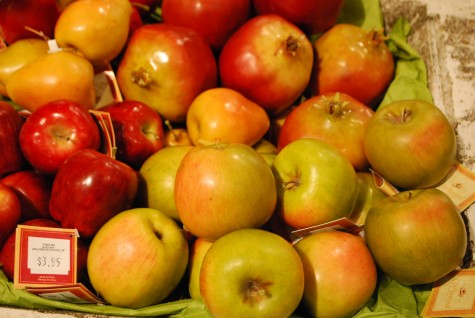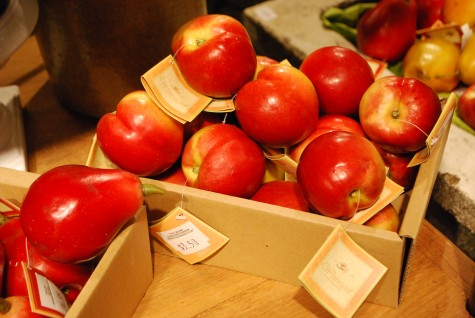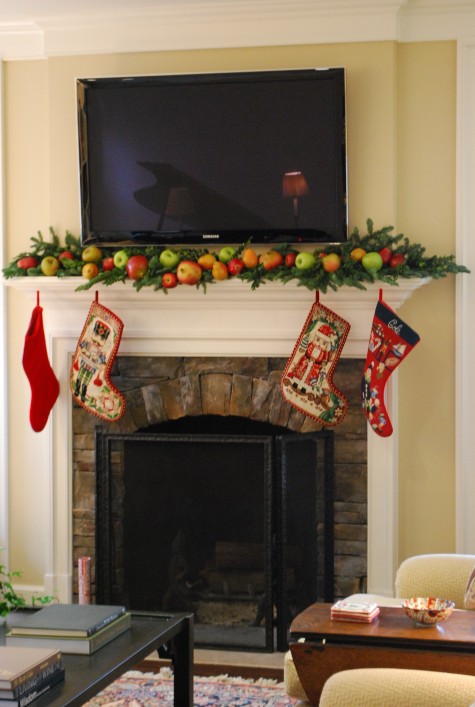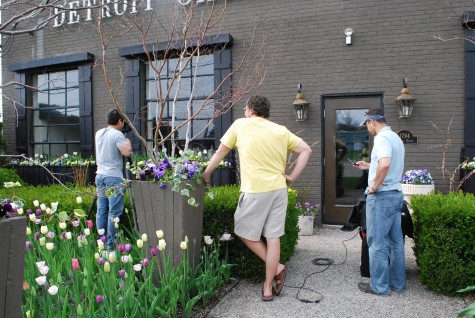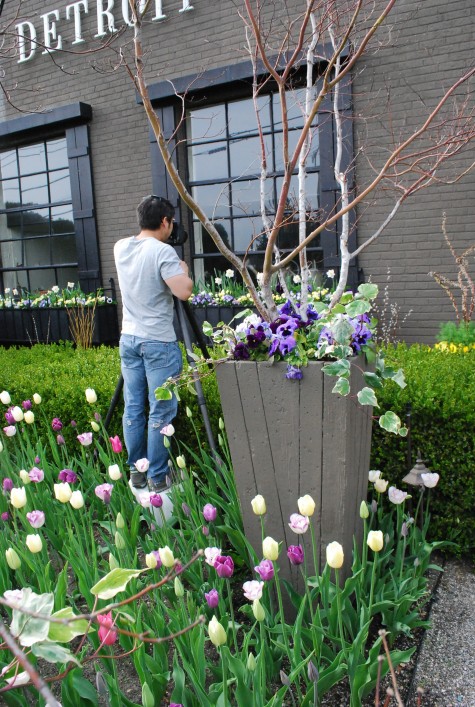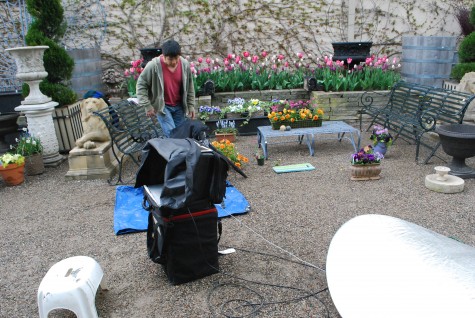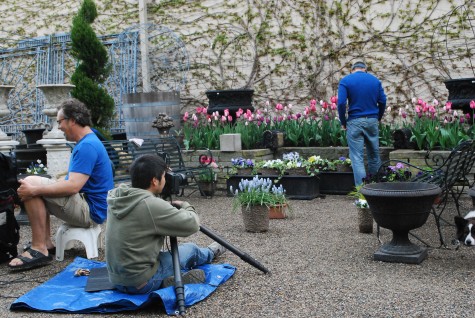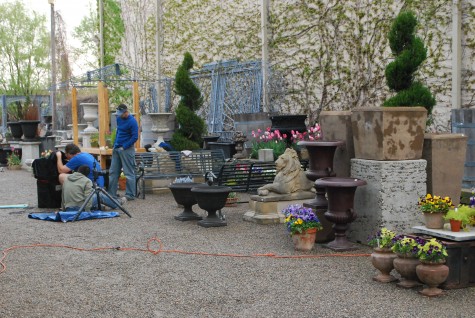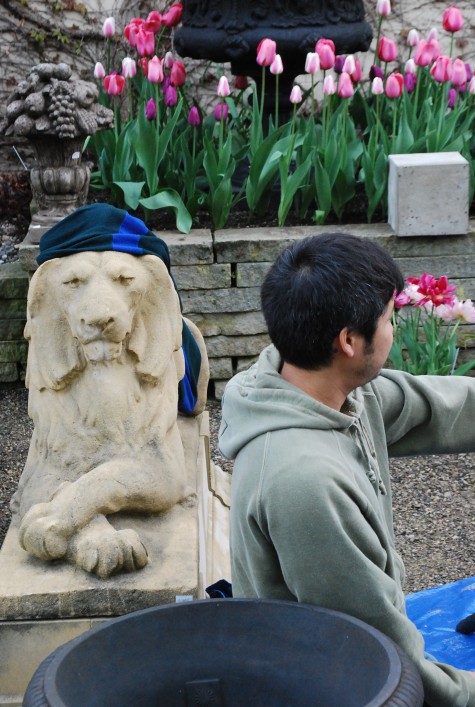 Even the most carefully planned and planted landscapes can go awry, given enough time and circumstance. So no wonder that landscapes that were planted without regard to mature plant heights and sizes, eventually suffer and decline from that reactionary style of pruning that turns every green plant into a shadow of its glorious self. The person who decided to plant euonymus alata compacta-burning bush-in front of a house with windows that are only inches off the ground, and in spaces scarcely 3 feet from walkway to wall, or 6 inches from the foundation of the house- this person knew only enough to be dangerous. A spectacularly grown compact burning bush is every inch of 8′ by 8′. This would be 64 square feet of loosely structured shrub whose charm lies in its casual ability to densely screen a large space, and its brilliant red fall leaf color. There is no sign of such in the above landscape; the burning bush have been bit back to the quick by an electric hedge trimmer with an unlicensed person at the helm. In this case, a lawn cutting crew moved on to landscape maintenance without one shred of knowledge about proper pruning. Landscapes thus maintained age very quickly.
Even the most carefully planned and planted landscapes can go awry, given enough time and circumstance. So no wonder that landscapes that were planted without regard to mature plant heights and sizes, eventually suffer and decline from that reactionary style of pruning that turns every green plant into a shadow of its glorious self. The person who decided to plant euonymus alata compacta-burning bush-in front of a house with windows that are only inches off the ground, and in spaces scarcely 3 feet from walkway to wall, or 6 inches from the foundation of the house- this person knew only enough to be dangerous. A spectacularly grown compact burning bush is every inch of 8′ by 8′. This would be 64 square feet of loosely structured shrub whose charm lies in its casual ability to densely screen a large space, and its brilliant red fall leaf color. There is no sign of such in the above landscape; the burning bush have been bit back to the quick by an electric hedge trimmer with an unlicensed person at the helm. In this case, a lawn cutting crew moved on to landscape maintenance without one shred of knowledge about proper pruning. Landscapes thus maintained age very quickly.
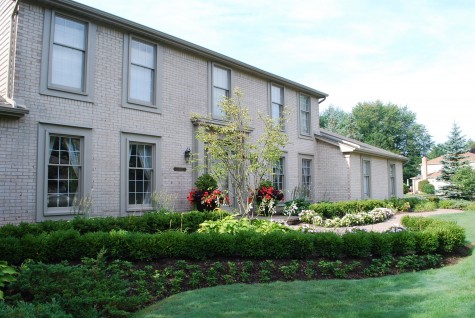 Given that this client has a sizeable property, we found a home for the burning bush where they could spread their wings, and live in peace. Existing boxwood was dug and replanted in a more generous and informal curve. New boxwood across the front of the home can be maintained at a height that features rather than obstructs the windows. Unseen as well they should be-variegated hostas were collected from 5 different locations on the property, and planted in mass behind the boxwood. Thery will mature at a height well below the bottoms of the windows.
Given that this client has a sizeable property, we found a home for the burning bush where they could spread their wings, and live in peace. Existing boxwood was dug and replanted in a more generous and informal curve. New boxwood across the front of the home can be maintained at a height that features rather than obstructs the windows. Unseen as well they should be-variegated hostas were collected from 5 different locations on the property, and planted in mass behind the boxwood. Thery will mature at a height well below the bottoms of the windows.
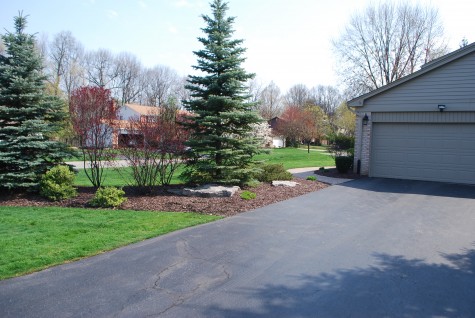 Plants die-from disease, from physical damage, from drought or overwatering, from poor placement-or from old age. Barked landscape beds give the impression of neatness and care, but eventually the empty spaces outnumber the planted ones. The red leaved sand cherries in this bed have reacted to their yearly flat-top buzz cut with long leggy and unattractive stems. The spruces which 10 years ago had plenty of space are further putting the squeeze on those badly pruned shrubs. We moved these stick bushes to better pastures, and moved in some of the same species that had been languishing in another bed in the shade.
Plants die-from disease, from physical damage, from drought or overwatering, from poor placement-or from old age. Barked landscape beds give the impression of neatness and care, but eventually the empty spaces outnumber the planted ones. The red leaved sand cherries in this bed have reacted to their yearly flat-top buzz cut with long leggy and unattractive stems. The spruces which 10 years ago had plenty of space are further putting the squeeze on those badly pruned shrubs. We moved these stick bushes to better pastures, and moved in some of the same species that had been languishing in another bed in the shade.
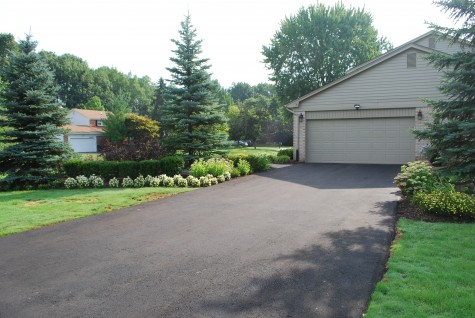 The yews from the front of the house-pruned exactly like the burning bush, were moved and grouped so they could grow together as a mass. They hide the bare legs of this new group of sand cherries-by nature a very short lived and disease prone shrub. I would guess that by the time the spruces close in on one another, the cherries will be at the limit of their lifespan. Shrubs and perennials can fill these awkward gaps in a landscape which inevitably occur when you place plant material with enough room to grow.
The yews from the front of the house-pruned exactly like the burning bush, were moved and grouped so they could grow together as a mass. They hide the bare legs of this new group of sand cherries-by nature a very short lived and disease prone shrub. I would guess that by the time the spruces close in on one another, the cherries will be at the limit of their lifespan. Shrubs and perennials can fill these awkward gaps in a landscape which inevitably occur when you place plant material with enough room to grow.
 The hydrangeas now underneath the spruce skirt were moved where they had light and room to grow. The two oddly placed variegated euonymus were dug from a number of spots, and planted in a mass that will grow out in a pleasing way. We filled the rest of this bed with existing plant material that needed a more friendly home.
The hydrangeas now underneath the spruce skirt were moved where they had light and room to grow. The two oddly placed variegated euonymus were dug from a number of spots, and planted in a mass that will grow out in a pleasing way. We filled the rest of this bed with existing plant material that needed a more friendly home.
 It will take time for all of the plants to grow out of their hot air balloon shapes, and have a a natural and relaxed look. Annuals and perennials do a great job of filling the gaps, so the bed looks fully planted. A landscape renovation is not always about introducing new material. It can be about moving, dividing, rearranging, relocating what no longer works.
It will take time for all of the plants to grow out of their hot air balloon shapes, and have a a natural and relaxed look. Annuals and perennials do a great job of filling the gaps, so the bed looks fully planted. A landscape renovation is not always about introducing new material. It can be about moving, dividing, rearranging, relocating what no longer works.
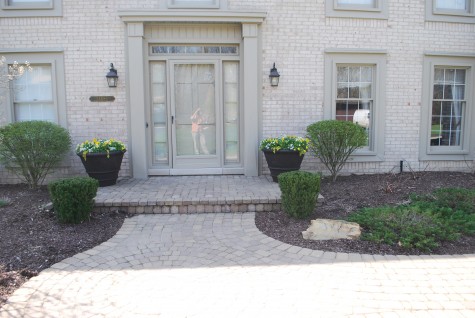 New pots on the porch was the first step in revising this entrance planting. The picture above tells more than you ever wanted to know about bad placement, worse pruning, and bark. This landscape was much about what was performingly poorly, and missing.
New pots on the porch was the first step in revising this entrance planting. The picture above tells more than you ever wanted to know about bad placement, worse pruning, and bark. This landscape was much about what was performingly poorly, and missing.
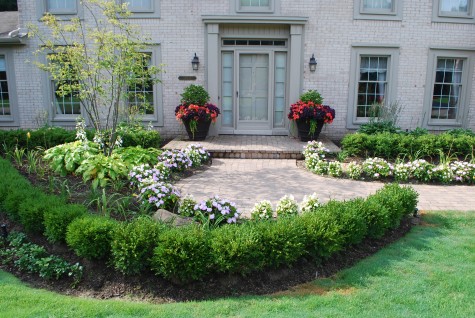 Most of the plant material you see here came from someplace else on the property. Recycled plant material, some new boxwood, and some annuals make this porch a far more inviting spot. I am the first to suggest when something just needs to go, but I do try to imagine what it would look like, or how it might better perform in another location.
Most of the plant material you see here came from someplace else on the property. Recycled plant material, some new boxwood, and some annuals make this porch a far more inviting spot. I am the first to suggest when something just needs to go, but I do try to imagine what it would look like, or how it might better perform in another location.
 Newly planted plants have that fresh out of the nursery look. But plants will settle down and grow, given proper siting, planting, and care. As for the rest of what you have, there may be a new landscape sitting there, waiting for a new arrangement.
Newly planted plants have that fresh out of the nursery look. But plants will settle down and grow, given proper siting, planting, and care. As for the rest of what you have, there may be a new landscape sitting there, waiting for a new arrangement.



